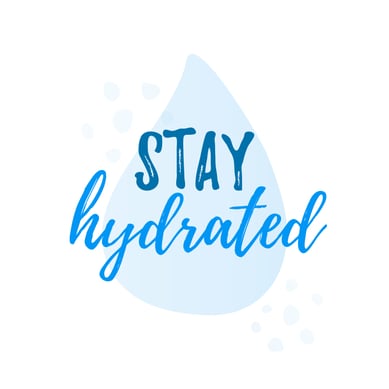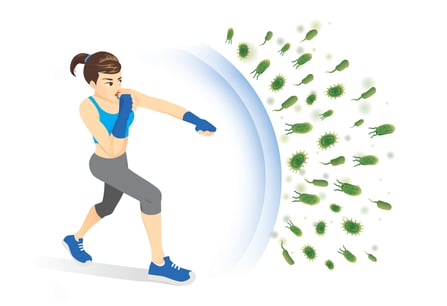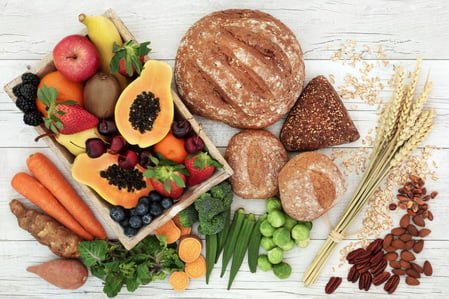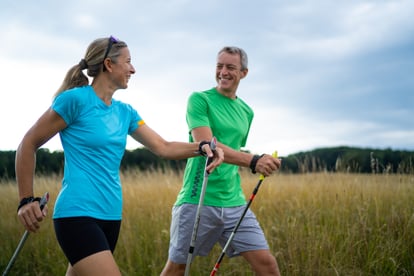 We all know regular exercise is great for your heart and overall health, but what does that actually mean? The truth is, the benefits of exercise can start almost immediately, and your body continues to adapt over time as you stick to your routine. The key is consistency: finding an exercise routine that works for you and maintaining it. If you stop exercising, your body can lose the adaptations it worked hard to achieve.
We all know regular exercise is great for your heart and overall health, but what does that actually mean? The truth is, the benefits of exercise can start almost immediately, and your body continues to adapt over time as you stick to your routine. The key is consistency: finding an exercise routine that works for you and maintaining it. If you stop exercising, your body can lose the adaptations it worked hard to achieve.
What Am I At Risk For?
Many people don’t realize they’re at risk for cardiovascular disease until it’s too late. These risks often remain hidden because we can’t physically see them. However, the American College of Sports Medicine (ACSM) has identified a set of risk factors to watch for. Some, like age and family history, can’t be changed, but others can be improved through lifestyle choices like exercise.
Non-Changeable Risk Factors
- *Age: Men over 45 and women over 55 are at increased risk.
- *Family history: If a male family member had a heart attack or heart surgery before age 55—or a female family member before age 65—you may have a higher risk.
Changeable Risk Factors
- Smoking: Current smokers or those who quit within the past six months.
- Physical inactivity: Not meeting the recommended 150-300 minutes of moderate exercise or 75-150 minutes of vigorous exercise per week.
- BMI (Body Mass Index): A BMI over 30 increases your risk.
- Blood pressure: Resting blood pressure greater than 130/80 mmHg.
- Cholesterol levels: LDL >130 mg/dL, HDL <40 mg/dL, or total cholesterol >200 mg/dL.
- Blood sugar levels: Fasting blood sugar >100 mg/dL or A1C >5.7%.
Items with a (*) are beyond your control, but the rest can be improved through regular exercise and healthy habits. These measurements require testing by a medical professional, like your primary care physician (PCP).
What Are the Benefits of Exercise?
Let’s break down how regular physical activity can positively affect the changeable risk factors:
Smoking
It’s well known that smoking is harmful to your health. While exercise can’t undo the damage caused by smoking, it can help curb cravings and support efforts to quit. For additional resources, talk to your doctor about strategies and options.
Physical Inactivity
Being physically inactive can lead to other risk factors worsening over time. Incorporating regular exercise, even in small amounts, can make a big difference. Avoid sitting for long periods, and aim to move more throughout the day. Every step counts!
BMI
Weight loss doesn’t have to be complicated. At its core, it’s about calories in vs. calories out. When you start exercising while maintaining your current calorie intake, your body begins burning excess calories, which can lead to weight loss. Over time, this reduces your BMI. If you’re curious about how many calories you should consume, schedule a Resting Metabolic Rate test with a health fitness specialist.
Blood Pressure
Ideally, resting blood pressure should be below 120/70 mmHg. During exercise, your heart works harder, and blood pressure rises temporarily. However, after exercise, your heart rate slows and your blood vessels relax, which lowers your blood pressure below its pre-exercise level. Over time, this adaptation helps your body maintain a healthier resting blood pressure.
Cholesterol
Exercise improves cholesterol by lowering the “bad” LDL cholesterol that clogs arteries and raising the “good” HDL cholesterol that helps clear LDL. Your body also uses cholesterol for energy during exercise instead of storing it. Pairing exercise with a heart-healthy diet amplifies these benefits. If you have questions about your diet, our registered dietitians are here to help.
Blood Sugar
Our body breaks down food into sugar, which is stored in the muscles and bloodstream. Exercise helps regulate this process by using excess blood sugar for energy, which improves insulin sensitivity and lowers resting blood sugar levels. Diet also plays a significant role, so consider meeting with a dietitian for personalized advice.
Where Do I Start?
Research consistently shows that exercising 150-300 minutes per week at moderate intensity (or 75-150 minutes per week at vigorous intensity) significantly reduces risk factors and benefits heart health.
Keep in mind that exercise intensity is unique to each person based on their fitness level. Working with a health fitness specialist ensures you’re exercising safely and effectively for your needs. Stop by the Track Desk to schedule your free strategy session and personalized workout program today!
Exercise is an excellent way to complement other heart-healthy habits, but it’s not a substitute for prescribed medications. Always consult your healthcare provider before starting a new exercise program.




 What Do Your Kidneys Do?
What Do Your Kidneys Do?
 As many of us are confronted with the decision of whether to send our children back to school or continue with online learning, we are faced with many questions that we had never had to ask ourselves before. Breakfast, lunch, and often snacks are mainly consumed during these hours at school, so as we continue to see Indiana trying to return to normal and reopen, we might need to tailor our eating habits to ensure we are not risking unnecessary exposure to COVID-19 when refueling our bodies throughout the day. These ideas also work for adults who are returning to the workplace or have already returned to the workplace.
As many of us are confronted with the decision of whether to send our children back to school or continue with online learning, we are faced with many questions that we had never had to ask ourselves before. Breakfast, lunch, and often snacks are mainly consumed during these hours at school, so as we continue to see Indiana trying to return to normal and reopen, we might need to tailor our eating habits to ensure we are not risking unnecessary exposure to COVID-19 when refueling our bodies throughout the day. These ideas also work for adults who are returning to the workplace or have already returned to the workplace. Have you ever noticed that during the cold and flu season, some people just don’t get sick no matter what? Or maybe you have wondered why after being exposed to the same virus, one person gets sick while the other doesn’t.
Have you ever noticed that during the cold and flu season, some people just don’t get sick no matter what? Or maybe you have wondered why after being exposed to the same virus, one person gets sick while the other doesn’t. Has a physician or other healthcare provider recently told you to improve your diet and exercise? If you are like most Americans, there is also a pretty good chance that you have a stressful lifestyle that leaves you short on the time, money, and energy it takes to implement these changes. Besides, other than a few extra pounds, you haven’t really noticed any changes to your body, right?
Has a physician or other healthcare provider recently told you to improve your diet and exercise? If you are like most Americans, there is also a pretty good chance that you have a stressful lifestyle that leaves you short on the time, money, and energy it takes to implement these changes. Besides, other than a few extra pounds, you haven’t really noticed any changes to your body, right? In recent years, carbohydrates have seemingly been blamed for our health problems. Many of us now shun potatoes, rice, and even fruit in fear of the dreaded pounds that could come with eating carbohydrates. While many diets demonize carbohydrates, others preach the benefits of higher-carbohydrate diets. Through all of this confusion, I will try to set the record straight.
In recent years, carbohydrates have seemingly been blamed for our health problems. Many of us now shun potatoes, rice, and even fruit in fear of the dreaded pounds that could come with eating carbohydrates. While many diets demonize carbohydrates, others preach the benefits of higher-carbohydrate diets. Through all of this confusion, I will try to set the record straight. Unless you have been on Mars for the last four or five decades, you have heard, read, and seen the benefits of walking for health and fitness. There is no new hot take on walking; it’s always been a fantastic way to stay healthy and enjoy exercise.
Unless you have been on Mars for the last four or five decades, you have heard, read, and seen the benefits of walking for health and fitness. There is no new hot take on walking; it’s always been a fantastic way to stay healthy and enjoy exercise. heard that exercise is good for health. The fitness industry has been growing significantly over the past decade. As of 2017, there were
heard that exercise is good for health. The fitness industry has been growing significantly over the past decade. As of 2017, there were ![GettyImages-627455550-[Converted]-new](https://www.nifs.org/hs-fs/hubfs/GettyImages-627455550-%5BConverted%5D-new.jpg?width=402&name=GettyImages-627455550-%5BConverted%5D-new.jpg)
 How often is it that you hear someone say, “Man, that was a great night’s sleep!” or “I slept like a baby!”? Not as often as we would like to hear, I would say! Being tired and feeling sluggish seems to be the new normal. According to the
How often is it that you hear someone say, “Man, that was a great night’s sleep!” or “I slept like a baby!”? Not as often as we would like to hear, I would say! Being tired and feeling sluggish seems to be the new normal. According to the